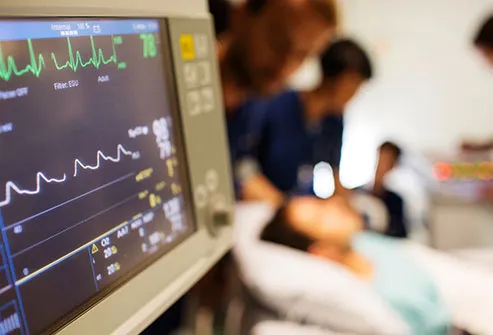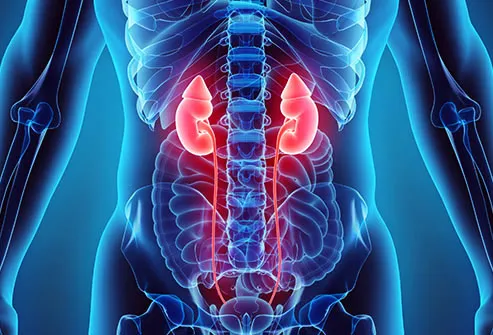What's a Clot?

It's a clump of cells and protein in your blood. A clot helps slow bleeding when you're injured. It usually dissolves as you heal. But if it doesn't, or if it forms when it's not needed, it can clog up or completely block a blood vessel.
What Problems Can It Cause?

An unexpected clot can lead to serious problems and even death. In an artery, it can give you a heart attack or a stroke. If it happens in a vein, you can feel pain and swelling. A clot deep inside your body is called a deep vein thrombosis (DVT). One in your lungs is a pulmonary embolism (PE). They're both medical emergencies.
Know Your Chances

You can get a blood clot if you break a bone or pull a muscle badly. But sometimes you may not know why it happened or even realize you have one. There are clues though. Your odds of a clot are higher if you:
- Are recovering from surgery or had to sit for many hours on a flight or in a wheelchair
- Are overweight or obese
- Have diabetes or high cholesterol
- Are over 60
Clue: Swelling

When a clot slows or stops the flow of blood, it can build up in the vessel and make it swell. If it happens in your lower leg or calf, it's often a sign of DVT. But you also can have a clot in your arms or belly. Even after it goes away, one in three people still have swelling and sometimes pain and sores from damage to the blood vessel.
Clue: Skin Color

If a clot plugs up veins in your arms or legs, they may look bluish or reddish. Your skin also might stay discolored from the damage to blood vessels afterward. A PE in your lung could make your skin pale, bluish, and clammy.
Clue: Pain

Sudden, intense chest pain could mean the clot has broken off and caused a PE. Or it could be a sign that a clot in your artery gave you a heart attack. If so, you also might feel pain in your arm, especially on the left. A clot often hurts where it's located, like in your lower leg, stomach, or under your throat.
Clue: Trouble Breathing

This is a serious symptom. It could be a sign that you have a clot in your lung or your heart. Your heart might also race, or you may feel sweaty or faint.
Location: Lung

A clot can give you different symptoms based on where it is. A PE can give you a fast pulse, chest pain, bloody cough, and shortness of breath. Get to the hospital right away. You also might have no signs.
Location: Heart

This can feel similar to a clot in the lung. But if it's a heart attack, you also might feel nausea and lightheadedness along with the chest pain. Either way, call 911 or get to a hospital right away.
Location: Brain

Pressure builds when blood can't flow normally. A severe blockage sometimes can lead to a stroke. Without oxygen from the blood, your brain cells start to die in minutes. A clot in your brain can cause headaches, confusion, seizures, speech problems, and weakness, sometimes on just one side of the body.
Location: Belly

Often, you have no symptoms at all. Blocked veins in the stomach or esophagus, a tube that connects it to your throat, can rip and leak blood. That can hurt a lot. You may poop or vomit blood, and your stool might look black and smell unusually bad.
Location: Kidneys

Also called renal vein thrombosis, these clots usually grow slowly and mostly in adults. You probably won't have symptoms unless a piece breaks off and lodges in your lung. Rarely, especially in children, it can happen fast and cause nausea, fever, and vomiting. You also might have blood in your pee and go less often.
If You Suspect a Blood Clot

See your doctor or go to the emergency room right away. A clot can be deadly, and you won't know for sure you have it until you get checked. Your doctor may give you a clot-busting drug or surgically thread a thin tube to the site of the clot to dissolve it.
Prevention Tips

You can act to lower your odds of a clot. First, keep a healthy weight, eat right, and exercise. Also:
- Don't sit or stay still for long, especially after a long trip or surgery.
- If you're a desk jockey, get up and move at least every couple of hours. Flex your legs, feet, and toes in your chair.
- Check if tight-fitting compression socks or garments can help your blood flow.
- Ask your doctor if you might need to take clot-fighting drugs called anticoagulants.
Blood Clots: 4 Signs You Could Have One
This tool does not provide medical advice. See additional information: 
© 1996-2024 WebMD, LLC. All rights reserved.
Source slideshow on WebMD
